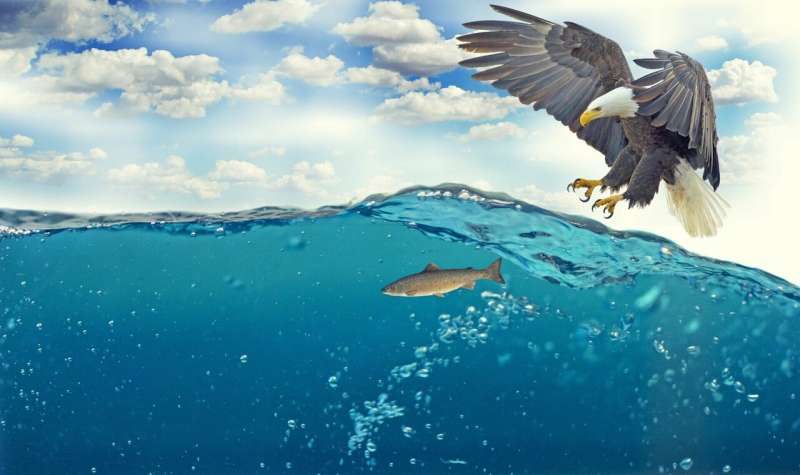This article has been reviewed according to Science X's editorial process and policies. Editors have highlighted the following attributes while ensuring the content's credibility:
fact-checked
trusted source
written by researcher(s)
proofread
Ridding Macquarie Island of pests pays off as seabirds come back from the brink—but recovery has just begun

One of the largest publicly funded conservation investments in history is starting to pay off on Macquarie Island, our newly published study shows.
Sealers and whalers introduced cats, rats, rabbits and other animals to the island in the 19th century. Their impacts devastated the millions of seabirds breeding on the island. Numbers fell to a fraction of their former populations.
From 2011-14, the last non-native pests were cleared from the island. It was the end of a deadly chapter in the island's history during which two bird species, a rail and a parakeet, were lost from the planet forever.
We looked for signs of recovery in populations of petrels, a group of highly specialized seabirds. We found that species listed as threatened have recovered to the point where they can be delisted. There's still a long way to go, though, before their populations return to historical levels.
A highly threatened group of birds
Petrels can live for decades and spend most of their lives over the open oceans far from land. Some circumnavigate the Pacific each year.
Petrels return to land only to breed on remote islands that are naturally free of mammalian predators.
Under natural circumstances, petrels can be enormously abundant. This means they play important roles in marine food webs. And, by transferring marine nutrients to breeding islands, they enrich whole island ecosystems.
Petrels usually come ashore only at night and nest in underground burrows to ward off predatory birds. However, these behaviors have been no defense against the cats and rats introduced to most of the world's islands. As a result, petrels are among the world's most threatened bird groups.
These habits make petrels extremely difficult to study, so good information is lacking. We used novel technologies and new analytical approaches to calculate the population and distribution of four species across Macquarie Island and to compare these with surveys from the 1970s.
What did the study find?
Antarctic prions (Pachyptila desolata) remain the most widespread and common of the four species. They survived on the barren, elevated interior of the island in areas relatively inhospitable to predators. There are about 160,000 breeding pairs today, increasing by around 1% each year.
In the 1970s, cats ate an estimated 11,000 white-headed petrels (Pterodroma lessonii) each year. Only 15% of nests were successfully fledging chicks. Today there are about 12,800 pairs with a breeding success rate of about 80%.
White-headed petrels' range remains smaller than it was, and they were likely close to extinction before cats were eradicated in 2001. Listed as vulnerable in Tasmania, the population is growing by 1% a year and now warrants delisting.
Two species, gray petrel (Procellaria cinerea) and blue petrel (Halobaena caerulea), became extinct on the main island in the 1900s. Gray petrels disappeared altogether, while 500–600 pairs of blue petrels survived on a few coastal rock stacks. Both have now recolonised the main island.
Gray petrels still number only in the low hundreds and blue petrels in the thousands, but are increasing at more than 10% each year. Our data suggest blue petrels no longer qualify as a federally listed vulnerable species. Gray petrels will no longer qualify for listing as endangered in Tasmania if they increase at the same rate until 2026.
Recovery has only just begun
It is testament to the hard work of all those involved in eradicating invasive species that these bird species are showing signs of recovery. Yet we found ourselves pondering what "recovery" really means.
We don't know what Macquarie Island was like before humans first visited in 1810. To try to understand this, we identified suitable areas for recovering petrel populations by comparing with analogous islands with different invasive species histories.
The species we studied still occupy only a tiny fraction of the island. They were almost certainly many times more abundant historically. It will take decades for populations to fulfill their ecological roles again—if threats like climate change and avian influenza don't halt their recovery.
A vision of an island of abundance reborn
This is our vision of Macquarie Island if these amazing birds make a full recovery.
Days before visitors first sight land, thousands of seabirds swirl around the ship at sea. The white undersides of blue petrels and prions outnumber the spindrift cresting each wave. Rather than ones or twos, there's a constant stream of white-headed and soft-plumaged petrels.
On the island, all must tread carefully, sticking to managed paths to avoid collapsing burrows in the super-colonies that cover seaward-facing slopes. These areas, once denuded by rabbit grazing, have revegetated. A labyrinth of tunnels through the undergrowth blurs the lines between the surface and underground world.
In places the smell of ammonia is powerful. Even more pervasive is the warm, musty smell associated with petrel plumage.
By day, predatory skuas patrol the colonies, going from burrow entrance to entrance, as the occupants sit silently within. As the sun sinks, a scan from land with binoculars finds the petrels approaching en masse, loitering over coastal waters as they wait for the cover of darkness.
At dusk, black silhouettes swarm like flies up and down the coastal hills. Where once the night was silent save for the wind, the slopes are bubbling with the purr and chatter of blue petrels, the "kwick, kwick, kwick" calls of white-headed petrels and the mournful cries of soft-plumaged petrels. Once a forlorn few, the calls have become an excited cacophony.
Provided by The Conversation
This article is republished from The Conversation under a Creative Commons license. Read the original article.![]()



















